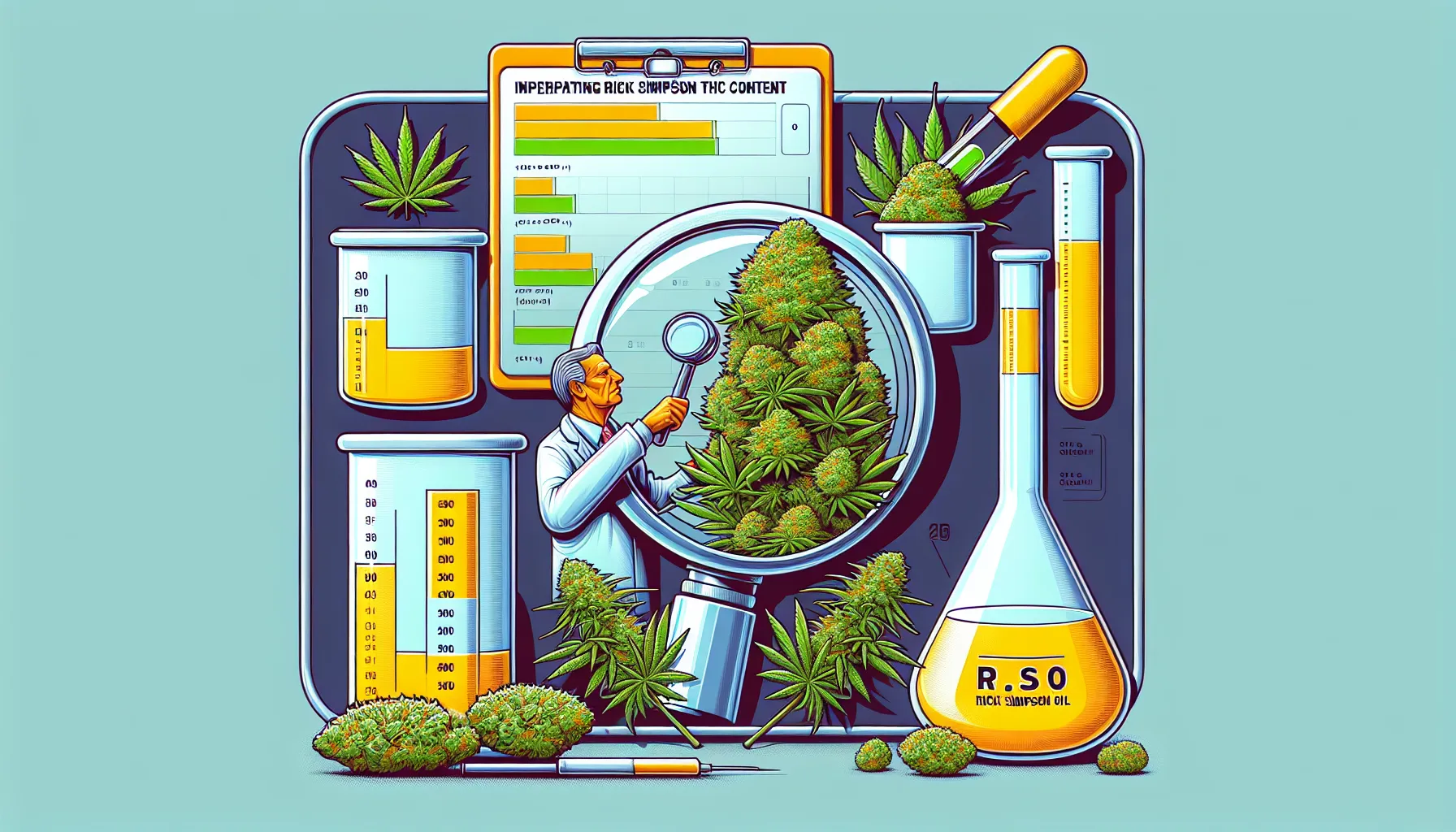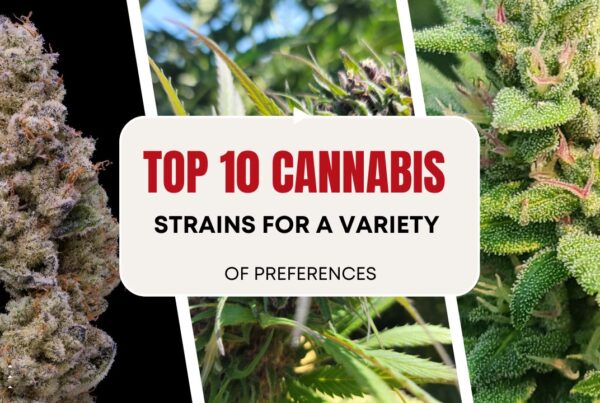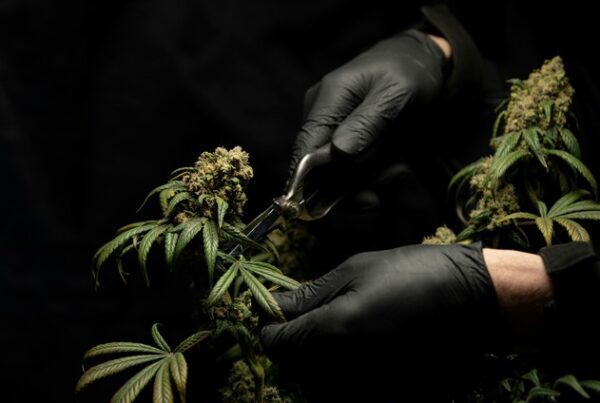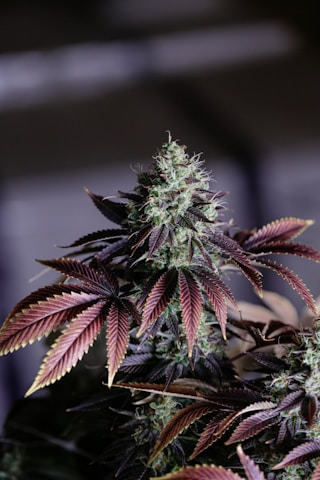Welcome to the world of RSO THC content!

In this introduction, we will delve into the essential aspects of understanding RSO THC content and what you need to know. RSO, short for Rick Simpson Oil, has gained significant attention for its potential health benefits, particularly in managing pain and other medical conditions. One crucial factor in RSO is its THC content, which plays a pivotal role in its effects and usage. Throughout this exploration, we will uncover the significance of THC content in RSO, its impact on the body, and how to navigate the varying levels of THC in different RSO products. Whether you’re a newcomer to RSO or seeking to deepen your knowledge, this guide will equip you with the essential insights to make informed decisions and understand the nuances of RSO THC content. Get ready to embark on a journey of discovery and empowerment in comprehending RSO THC content.
The Role of THC in RSO
Rick Simpson Oil (RSO) is renowned for its potency, primarily due to the high concentration of THC (tetrahydrocannabinol) present in it. Despite its potent THC levels, RSO doesn’t pose a threat of overdose or lasting side effects. However, precautions are necessary, especially for those looking to craft their RSO, as its preparation can involve the use of flammable solvents. Therefore, sourcing RSO from reputable, licensed dispensaries is often the safest route.
RSO, known for its high THC content, can potentially alleviate pain, given THC’s interaction with CB1 receptors in the brain and nerve cells. The high levels of THC present in RSO make it particularly effective at treating pain compared to other medical marijuana alternatives. It has been shown to help with several physical ailments, including chronic pain, migraines, inflammation, multiple sclerosis, arthritis, seizures, loss of appetite, asthma, glaucoma, and more.
The primary psychoactive component in cannabis, THC, is present in high concentrations in RSO, especially if made from high-THC strains. Even small amounts of RSO can induce significant psychoactive effects. Depending on the desired outcome, whether it be pain relief, relaxation, or other therapeutic benefits, the ratio of CBD to THC will play a significant role in determining the effective dosage.
Simpson, the creator of RSO, got the idea from a study regarding the positive impact of THC on cancer cells in mice after a series of unsuccessful surgery treatments. Through the knowledge from the research, Simpson created a THC-rich extract. RSO has high quantities of CBD and THC in different ratios, making it extremely potent. It’s apparent from Simpson’s batches that THC levels can reach 90 percent, while CBD levels could be as high as or higher than 60%. For those who prefer phytocannabinoids, various balanced RSOs are available in the market.
Regardless of the dosing regimen that you choose to follow, it may help to take RSO on a full stomach. This helps break down the active ingredients in a shorter timeframe, swiftly introducing the THC into your bloodstream so you can start experiencing the benefits within roughly 45 minutes.
The role of THC in RSO is pivotal in providing therapeutic benefits, especially in alleviating pain and addressing various physical ailments. The high levels of THC present in RSO make it a potent option for individuals seeking relief from chronic conditions and looking for alternative medical marijuana treatments.
Factors Influencing RSO THC Content
RSO, known for its high THC content, can potentially alleviate pain, given THC’s interaction with CB1 receptors in the brain and nerve cells. The primary psychoactive component in cannabis, THC (tetrahydrocannabinol), is present in high concentrations in RSO, especially if made from high-THC strains. Because RSO contains THC, its availability is restricted to states with legalized adult-use or medicinal cannabis. The methods of consuming RSO are diverse, with some applying it topically and others ingesting it. Depending on the extraction method, plant type, and other factors, the concentration of cannabinoids can vary widely between products. Always refer to the product’s label or accompanying literature to understand its specific concentration and recommended starting dosage. It’s important to start low, adjust slowly, and prioritize well-being when dosing RSO.
RSO is a complete spectrum extract that includes cannabinoids, flavonoids, terpenes, chlorophyll, and even plant compounds, making it extremely potent. The whole plant extraction of RSO makes it unique, with a wider range of cannabinoids like CBG, CBC, and CBN compared to other extracts. RSO also has a higher terpene profile, giving it more consumption advantage. It’s apparent from Simpson’s batches that THC levels can reach 90 percent, and CBD levels could be as high as or higher than 60%. All RSO products undergo a rigorous production, manufacturing, testing, and quality process. *THC-free is defined as below the level of detection using validated scientific methods.
Understanding THC Percentage in RSO
When it comes to Rick Simpson Oil (RSO), understanding the THC percentage is crucial for users to make informed decisions about dosage and consumption. RSO is known for its high quantities of CBD and THC in different ratios, making it extremely potent. In fact, it’s apparent from Simpson’s batches that THC levels can reach as high as 90 percent, while CBD levels could be as high as or higher than 60%. This potency underscores the importance of understanding the implications of THC percentages in RSO.
It is generally recommended that individuals begin with a dose of about 25 mg of oil, or the size of one grain of rice, three times per day. As tolerance develops and the response appears less potent, the amount can be increased by no more than another grain of rice. This gradual approach helps to lower the possibility of suffering from any of THC’s adverse repercussions.
One must be fairly careful when administering their dosage, and as a result, more often than not RSO is sold in a needle-less syringe to facilitate precise measurements. All store-bought RSO will have a THC percentage on the packaging, often between 50% and 80%. Understanding how to interpret these percentages and convert them to milligrams is essential for determining the appropriate dosage.
For those considering a 1:1 CBD to THC ratio, a general dosage chart can serve as a starting point. However, it’s important to note that these dosages are higher than typical CBD dosing guidelines. A common approach involves incrementally increasing the dosage every few days or weeks, allowing the body to adapt and helping the user pinpoint an optimal dosage level.
It’s also crucial to recognize that the effects of RSO can vary, and the journey to finding the ‘just right’ dosage is personal and often an evolving one. Additionally, a commonly recommended regimen consists of introducing up to 60 grams of RSO into the body in small amounts for 90 days, with each dose taken three times a day.
Understanding the THC percentage in RSO is fundamental for users to navigate its potency and effects. By being mindful of dosage, potency, and individual tolerance, individuals can make informed decisions about their RSO consumption.
Understanding THC Content in RSO
When it comes to using Rick Simpson Oil (RSO), understanding the THC content is crucial for effective dosing and safety. RSO products can vary in their THC levels, and it’s important to know the exact amount of THC in each gram. This is why lab testing plays a vital role in ensuring the accuracy of THC content in RSO. Different strains of RSO syringes are available in the market, and they may have varying levels or ratios of CBD to THC. Additionally, reputable companies provide lab test results for each batch of their RSO products, offering transparency about the cannabinoid content, including THC levels. This transparency allows consumers to make informed decisions about their RSO usage and ensures that they are aware of the THC content to avoid any potential issues. Lab testing also helps in identifying any impurities or pollutants that might be present in the RSO, further emphasizing the importance of lab testing for RSO THC content.
Using RSO (Rick Simpson Oil)
When using RSO (Rick Simpson Oil), it is crucial to ensure accurate labeling of THC content. All store-bought RSO will have a THC percentage on the packaging, typically between 50% and 80%. To convert this to milligrams, simply move the decimal place over one space. For example, a 75.5% THC RSO will have 755mg of THC. Additionally, on the side of the syringe, there are notches indicating the amount of RSO. By dividing the milligram amount by the number of notches, you can determine the dosage in each section. This method is essential for accurately determining your dose.
It’s important to carefully read the labels when purchasing RSO products, as there are no enforceable standards for ‘full spectrum RSO.’ Transparent labeling and detailed information are crucial for making informed decisions about RSO products. Always ensure that RSO is sourced from reputable, licensed dispensaries to guarantee safety and quality. By following these guidelines, consumers can make informed choices and safely benefit from RSO’s potential therapeutic properties.
Educating Consumers on RSO THC Content
Rick Simpson Oil (RSO) is gaining attention as a potential alternative remedy, particularly in states with legalized adult-use or medicinal cannabis. RSO contains THC, which restricts its availability to specific states. It can be consumed in various ways, such as topically, ingestion, vaping, or dabbing. However, due to its potency, a phased dosing system is recommended for ingestion to allow the body to acclimate to the oil.
As the landscape of medical marijuana treatment evolves, it’s crucial for consumers to stay informed about the latest studies, legal regulations, and dosage guidelines. RSO’s potential benefits are being explored, but it’s essential to seek advice from a medical marijuana physician before starting any new treatment journey. Additionally, remaining updated on the latest findings and research in this area is vital for making informed decisions.
Educational resources from reputable sources like CannaMD and Neurogan provide valuable insights into RSO usage, dosage, and product formats. These resources emphasize the importance of cautious dosing and observing any changes in the body’s reaction while increasing the dose. Furthermore, they highlight the convenience and user-friendly formats of RSO products, such as tinctures, gummies, and capsules, making it easier for consumers to incorporate RSO into their daily routines.
Educating consumers about RSO’s THC content, usage methods, and dosage guidelines is essential for promoting safe and informed consumption. By leveraging reliable resources and staying updated on the evolving landscape of medical marijuana treatment, consumers can make well-informed decisions about integrating RSO into their wellness routines.
Understanding the THC content in RSO is crucial for individuals seeking its therapeutic benefits. It’s essential to be well-informed about the potency and dosage to ensure safe and effective use. For further insights into cannabis-related information, including identifying symptoms of common cannabis diseases and effective treatment methods, visit. jgseeds.com/cannabis-diseases-identifying-symptoms-for-effective-treatment . Stay informed and make well-informed decisions for your cannabis-related needs.










